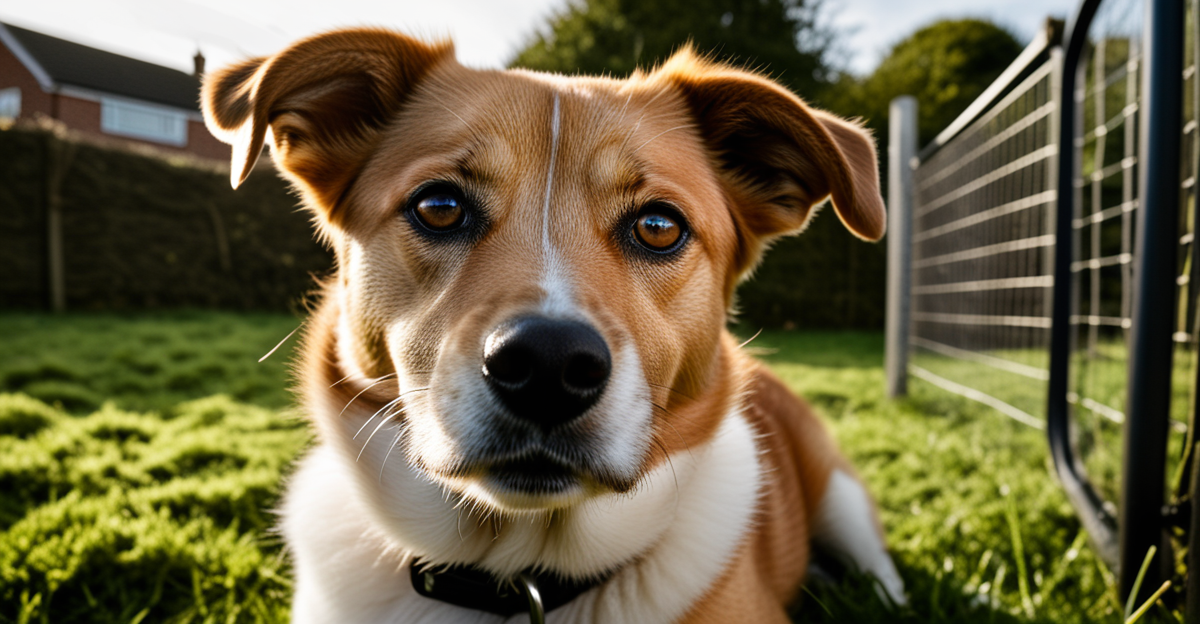Immediate Steps to Make Your Home Pet-Safe
Keeping your home a secure haven starts with a detailed pet-proofing home strategy tailored to common UK conditions. A thorough home safety checklist for pets should include securing electrical cords, stowing away cleaning products, and locking cabinets that contain harmful substances. Many everyday items pose unseen risks.
Understanding household hazards for pets in the UK is crucial. For example, antifreeze spills or certain laundry detergents can be highly toxic. Small toys or plastic bits left on the floor become choking hazards. Additionally, areas like kitchens and bathrooms require extra vigilance due to sharp objects and chemicals that pets might access.
Also read : How can UK pet owners ensure their pets stay active?
To effectively pet-proof rooms and secure hazardous items, start by confining pets to safer zones when unsupervised. Use childproof latches on cupboards where harmful foods or medicines are stored. Cover or unplug wires to prevent chewing incidents. Remember, pets explore by taste and smell, so even seemingly harmless objects can become dangerous. Taking these first immediate steps dramatically reduces the risk of accidents and ensures a safer environment for your furry friends in the UK.
Identifying Toxic Plants and Foods in the UK
When considering UK toxic plants pets may encounter, common garden favourites like lilies, rhododendrons, and foxgloves rank among the most dangerous. These plants contain substances harmful if ingested, leading to symptoms ranging from vomiting to severe organ damage. They are often found in private gardens, parks, and sidewalks, making awareness crucial for pet safety.
Also to discover : How Can You Ensure a Healthy Environment for Your Pets in the UK?
Dangerous foods for pets commonly present in UK homes include chocolate, grapes, onions, and certain artificial sweeteners like xylitol. These items can cause anything from mild stomach upset to life-threatening conditions such as liver failure or hypoglycemia. Pet owners should strictly enforce food boundaries during meals and dispose of waste securely.
To ensure effective pet poisoning prevention, promptly remove or restrict pet access to these toxic plants and foods. Signs of poisoning may include excessive drooling, lethargy, difficulty breathing, or seizures. Quick action, including contacting a vet, can be lifesaving. Recognising early symptoms enhances the chances of successful treatment and a quicker recovery. This proactive approach is vital for maintaining a pet safety UK standard in every household.
Legal Responsibilities and Essential UK Pet Laws
Understanding UK pet laws is fundamental for responsible ownership and ensuring your pet’s safety. Since April 2016, microchipping is a legal requirement for most dogs in England, Scotland, and Wales. This involves implanting a microchip and registering it with an authorised database. Microchipping requirements help reunite lost pets with owners swiftly and reduce abandonment. Owners must keep their contact details up to date to comply with regulations.
UK regulations also govern how pets behave in public and outdoor spaces. Dogs must be under control, typically on a lead where required, to prevent accidents or harm to others. Violating local pet ownership regulations can result in fines or other penalties. Knowing your area’s bylaws on leash laws, waste disposal, and noise control is essential to avoid legal issues and promote community safety.
If an incident like dog attacks or neglect occurs, responsible owners should report to local authorities or animal welfare organisations promptly. Awareness and adherence to UK pet laws foster a safer environment for pets and people alike. Compliance protects your rights and your pet’s wellbeing, making it a cornerstone of effective pet-proofing home and pet safety UK practices.
Securing Outdoor Spaces for Pet Safety
Creating a safe outdoor environment is key to effective pet safety UK practices. Start by securing gardens for pets: install sturdy, escape-proof fencing that prevents digging or climbing out. A fence should be checked regularly for gaps or damage. Balconies and patios must also be safeguarded with barriers or netting to prevent falls.
Be aware of common garden hazards. Slug pellets often contain metaldehyde, highly toxic to pets if ingested. Compost heaps can attract curious pets but may expose them to bacteria or harmful foods. Sharp garden tools, pesticides, and fertilisers should be stored securely out of reach.
When pet-proofing outdoor spaces, consider natural boundaries like dense hedges, but verify they contain no UK toxic plants pets typically encounter. Clear away fallen plant material promptly. Ensuring shaded, clean water access outdoors helps protect pets from overheating in summer.
Safety outdoors complements indoor pet-proofing home efforts and reduces risk from household hazards for pets transferring outside. A well-secured garden or yard encourages exercise and mental stimulation while offering a protected space from external dangers, reinforcing a comprehensive approach to pet safety UK.
Emergency Preparedness and Vet Contacts
Preparing for emergencies is essential to pet safety UK efforts. Start by assembling a pet first aid kit containing bandages, antiseptic wipes, a digital thermometer, and any medications your pet requires. Include a pet emergency contact list with your regular vet’s number, local emergency vet UK services, and 24-hour UK pet helplines.
How do you locate and contact emergency vets promptly? Research nearby 24/7 veterinary clinics and save their details on your phone. In urgent situations involving toxins, injuries, or escapees, immediate professional help can be life-saving. Knowing who to call reduces panic and delays.
Key steps during an emergency include assessing the pet’s condition calmly, providing first aid within your capabilities, and transporting the animal safely to a vet. For poisoning, try to identify the substance involved and relay this information quickly. If a pet escapes, search systematically and notify local shelters and vets.
Being prepared with knowledge and contacts enhances your ability to respond effectively. Prioritising emergency preparedness supports comprehensive pet-proofing home measures and ensures your UK pet’s safety is managed beyond everyday hazards.
Immediate Steps to Make Your Home Pet-Safe
Creating a practical pet-proofing home plan starts with a detailed home safety checklist for pets. In the UK, many household hazards for pets lurk unseen. Items like uncovered electrical cords, loosely stored medications, and cleaning products represent serious risks. Securing these immediately is critical for effective pet safety UK.
Begin by locking all cabinets containing toxic substances and relocating harmful chemicals to high shelves out of reach. Unplug or conceal electrical wires to prevent chewing accidents. Kitchens and bathrooms often hide sharp objects and poisons, so extra scrutiny here is essential.
A critical question often asked: How do you pet-proof rooms efficiently? Focus on removing small objects and choking hazards from floors and furniture. Use childproof locks and storage containers to secure potentially dangerous items. Limiting unsupervised access to risky zones also reduces chances of accidents.
By prioritising these immediate actions, you limit exposure to common household hazards for pets and lay a foundation for long-term pet safety UK. Such vigilance protects pets from preventable harm, giving owners peace of mind in their daily routines.
Immediate Steps to Make Your Home Pet-Safe
Ensuring pet safety UK starts with a comprehensive pet-proofing home approach focusing on a practical home safety checklist for pets. Common household hazards for pets include uncovered electrical cords, accessible cleaning agents, and unsecured medications. These risks are often underestimated, so immediate attention is vital.
To secure your home effectively, lock cabinets holding toxic substances and relocate chemicals and medicines to high, inaccessible spots. Unplug or conceal electrical wires as chewing can cause electrocution or fires. Kitchens and bathrooms require special care since many hazardous items accumulate there.
When pet-proofing rooms, focus on removing small objects that present choking risks. Use childproof locks on cupboards and store sharp items safely. Limit pet access to risky areas by using gates or closed doors, especially when unsupervised. Frequent inspections for new hazards also help maintain safety over time.
These initial steps reduce the likelihood of accidents linked to household hazards for pets and demonstrate practical ways to implement pet-proofing home measures, reinforcing consistent pet safety UK standards.









